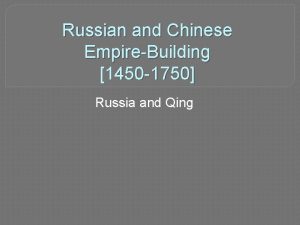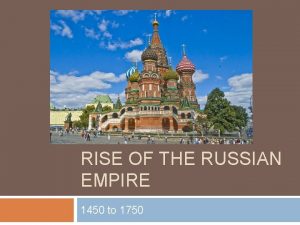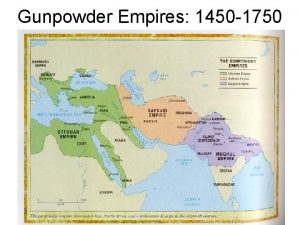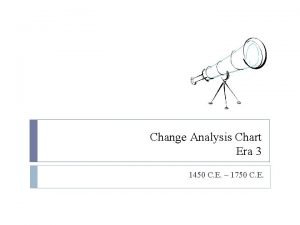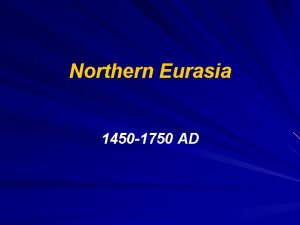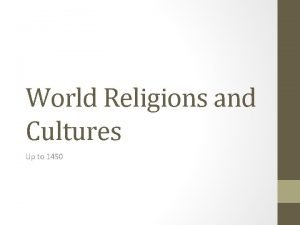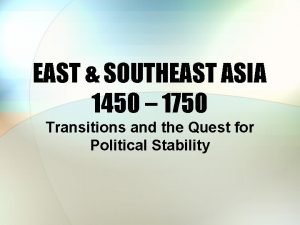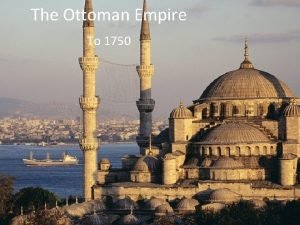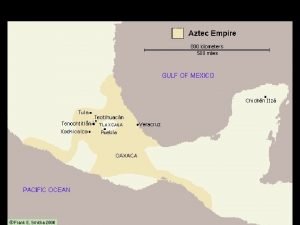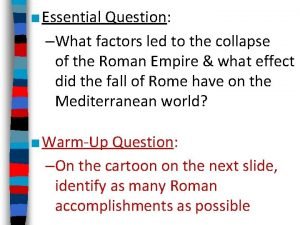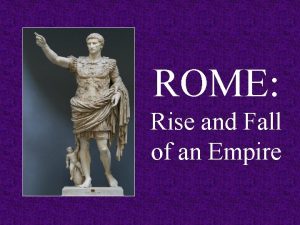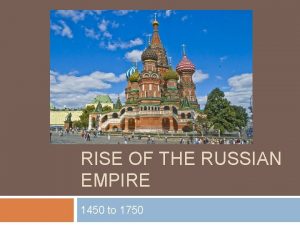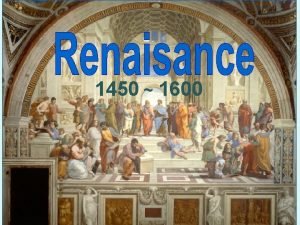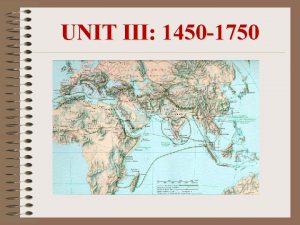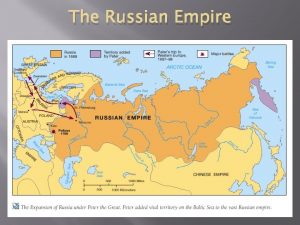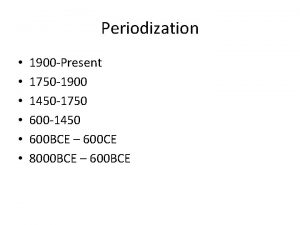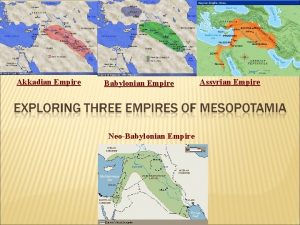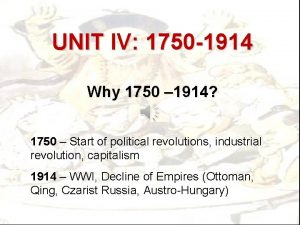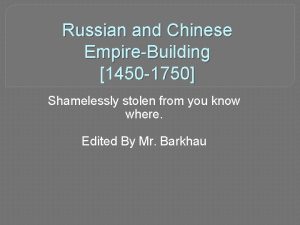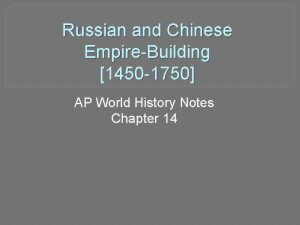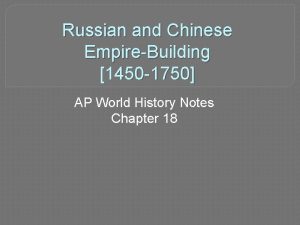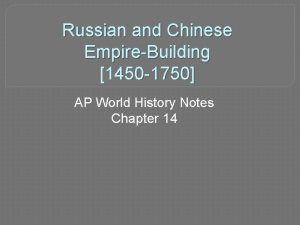RISE OF THE RUSSIAN EMPIRE 1450 to 1750
















- Slides: 16

RISE OF THE RUSSIAN EMPIRE 1450 to 1750

Overview 1450: still under Mongol control � Isolated from advancements of Western Europe 1750: enormous land empire � Territorial expansion eastward � Governmental reforms

Breaking Free from the Mongols set up tributary feudal state with Moscow as collection point � This shifted power from Kiev to Moscow Mongols got local Moscow princes to help in administration � This strengthens Dutchy of Moscow and gives them administrative experience Moscow leads successful fight for

Ivan III (the Great) begins annexing surrounding territory Married niece of last Byzantine ruler proclaims Moscow “the third Rome, ” heir to Rome and Constantinople

Ivan IV (the Terrible) First “czar”, begins annexation of Siberia Decreased the power of the boyars (Russian nobles) � Killed, took their land, or relocated boyars � This significantly increased the power of the monarchy. Accidentally kills son, leaving Russia without an heir


The Romanovs 1613: Michael Romanov becomes czar, founds dynasty that continues until 1917

Peter the Great 1689 -1725 Russia’s first emperor Establishes Russia as a modern European power Traveled extensively in western Europe Convinced empire could only be successful by imitating western success � WESTERNIZATION!

Peter’s Reforms 1. Military Reform � Modern army, navy, modern gunpowder weapons 2. Building Infrastructure � roads for military 3. Expansion of territory � Fought (lost) Sweden (won), Ottomans 4. Reorganization of the bureaucracy � More effective taxes, takes power from the nobility 5. Relocation of the capital to St. Petersburg


Peter the Great Interrogating his son, Alexei, later tortured and killed at Peter’s instruction for disobeying the emperor

The most famous (1782) statue of Peter I in Saint Petersburg, informally known as the Bronze Horseman

Catherine the Great 1762 -1796 German princess who married Peter’s grandson Seized power from her husband to become czarina Continued policy of westernization and reform

Russian Expansion Similar to USA expansion westward Driven by need for protection, fur trade Russians demanded loyalty and tribute from conquered peoples Russian settlers migrated to Siberia “Russification” of previously nomadic peoples USA bought Alaska from Russia in 1867 for 2 cents an acre!!

Conclusion Russia became a multi-ethnic empire Westernization and Russification identify crisis � Was Russia a backward European state or Asian power? Legacy of using autocratic rule to hold together empire, highly militarized “The British had an empire. Russia was an empire. ” � Geoffrey Hosking

Links http: //www. youtube. com/watch? v=Uy 9 Hod. MC 048 http: //www. youtube. com/watch? v=b. Pj 1 t. AKm. P zc
 St basil's cathedral ap world history
St basil's cathedral ap world history Russia 1450 to 1750
Russia 1450 to 1750 Mughal empire 1450 to 1750
Mughal empire 1450 to 1750 Land based empires 1450 to 1750
Land based empires 1450 to 1750 Change analysis chart 1450 to 1750
Change analysis chart 1450 to 1750 Japan 1450-1750
Japan 1450-1750 Religion 1450-1750
Religion 1450-1750 Silver trade 1450 to 1750
Silver trade 1450 to 1750 Southeast asia 1450 to 1750
Southeast asia 1450 to 1750 Ottoman empire in 1750
Ottoman empire in 1750 Tricky dicky richard nixon
Tricky dicky richard nixon Little lambs academy
Little lambs academy Rise and rise again until lambs become lions origin
Rise and rise again until lambs become lions origin Rise and rise until lambs become lions
Rise and rise until lambs become lions The rise of the aztecs
The rise of the aztecs What factors led to the rise of the roman empire
What factors led to the rise of the roman empire Rome rise and fall of an empire
Rome rise and fall of an empire
